MCP: using Java and Quarkus to bridge LLMs with your applications and data Horacio Gonzalez 2025-01-30
A presentation at Sevilla JUG in April 2025 in Seville, Spain by Horacio Gonzalez
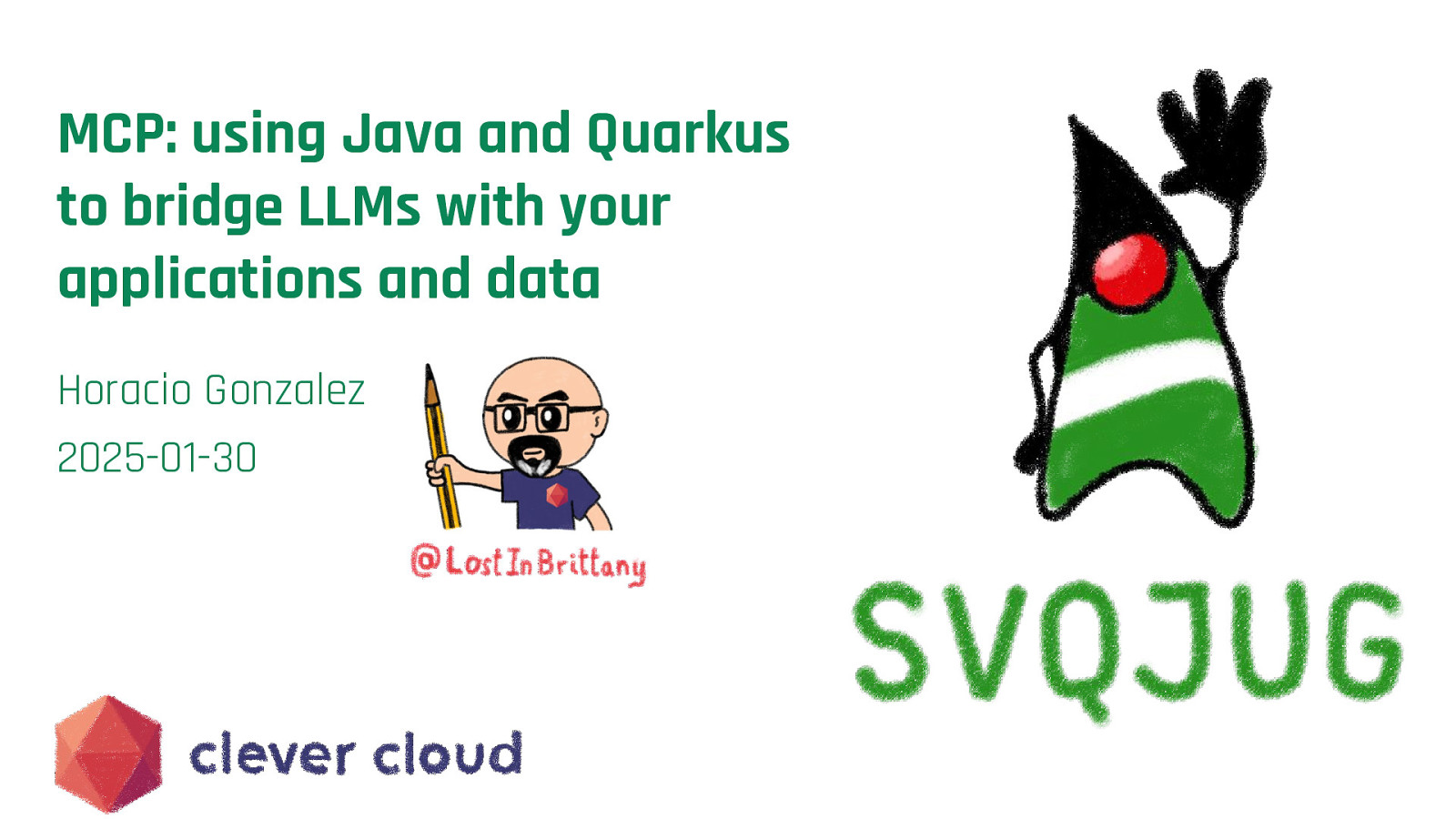
MCP: using Java and Quarkus to bridge LLMs with your applications and data Horacio Gonzalez 2025-01-30
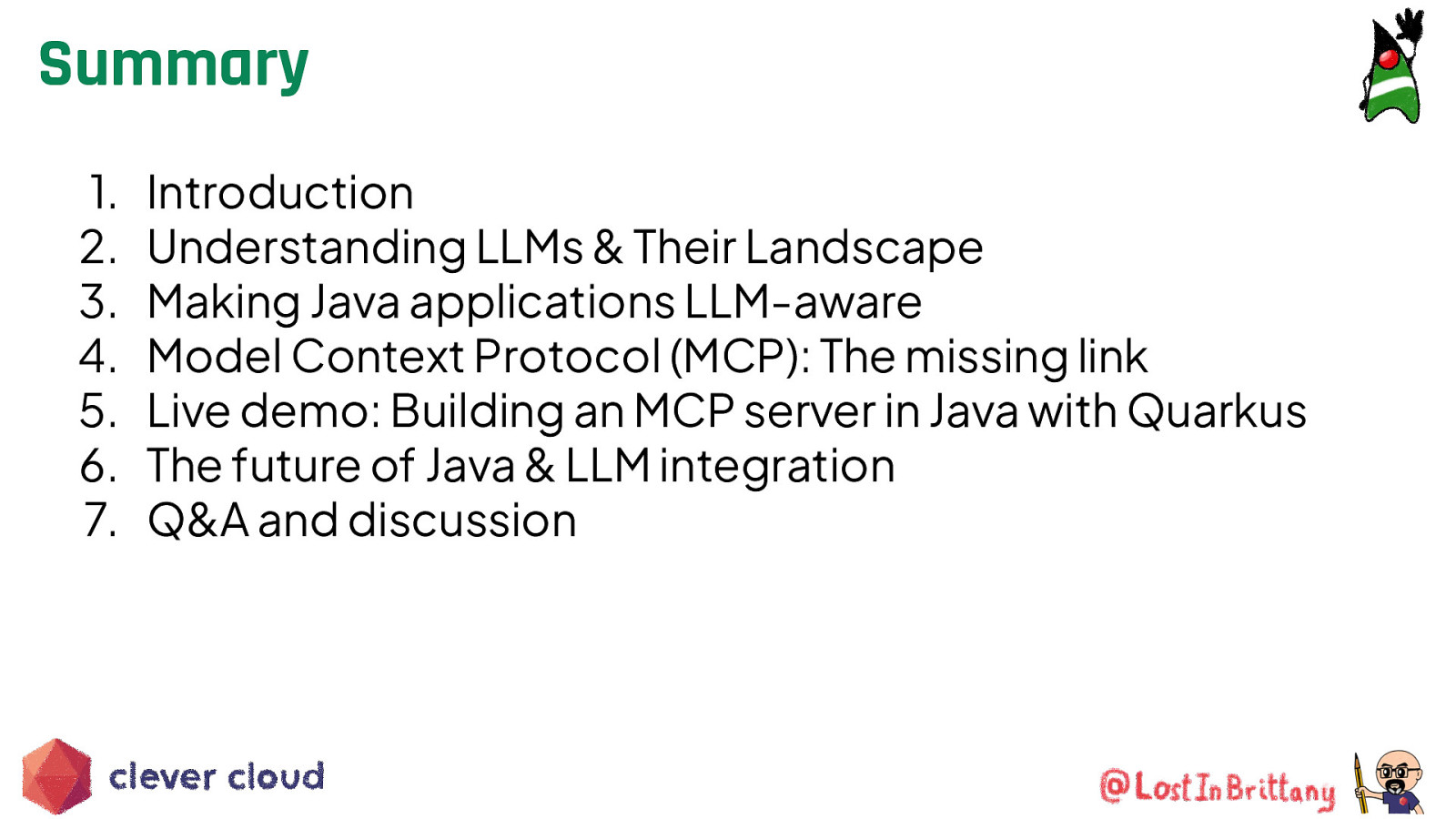
Summary 1. 2. 3. 4. 5. 6. 7. Introduction Understanding LLMs & Their Landscape Making Java applications LLM-aware Model Context Protocol (MCP): The missing link Live demo: Building an MCP server in Java with Quarkus The future of Java & LLM integration Q&A and discussion

Introduction LLMs are changing software development— how can Java developers take full advantage?
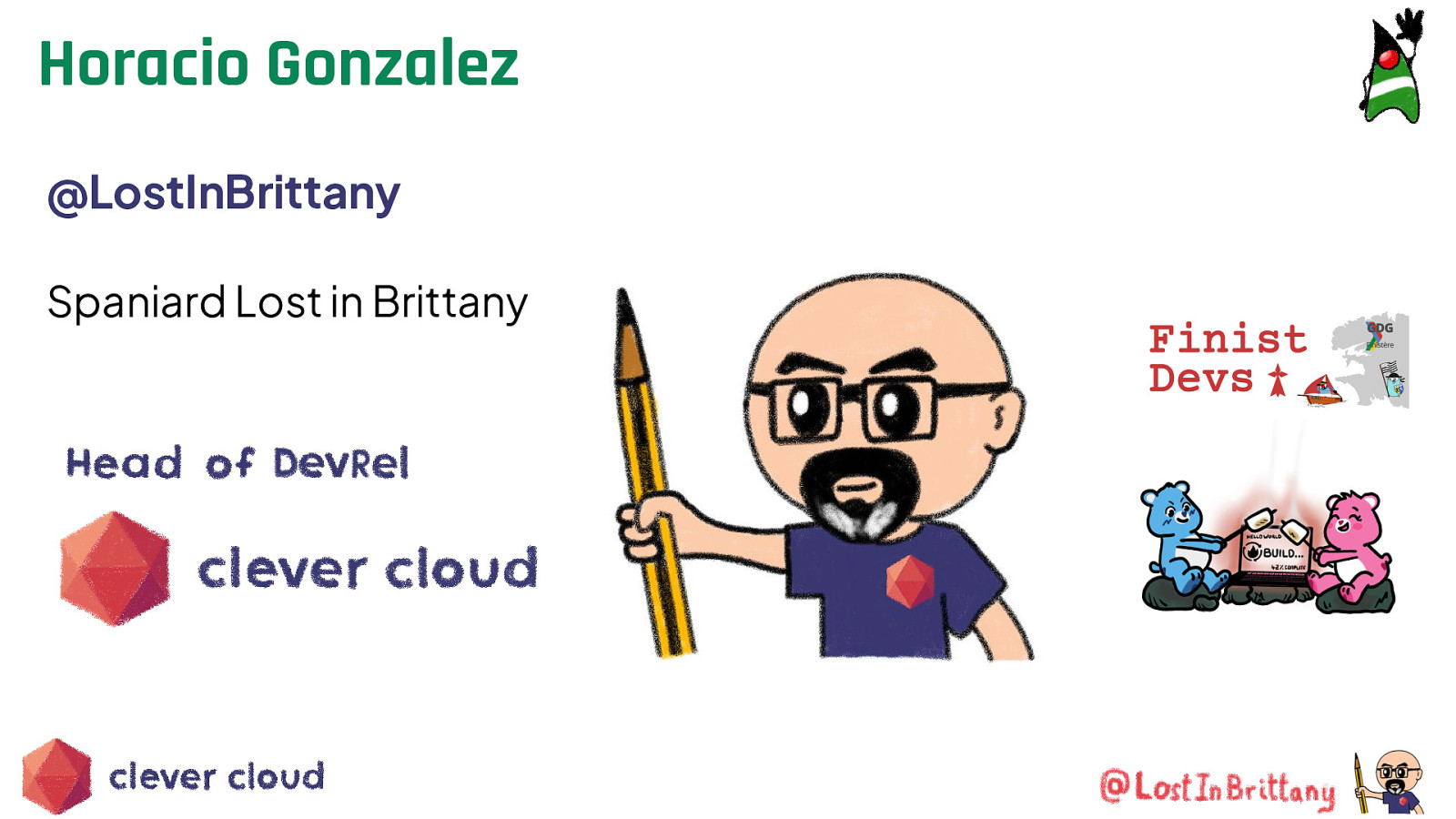
Horacio Gonzalez @LostInBrittany Spaniard Lost in Brittany
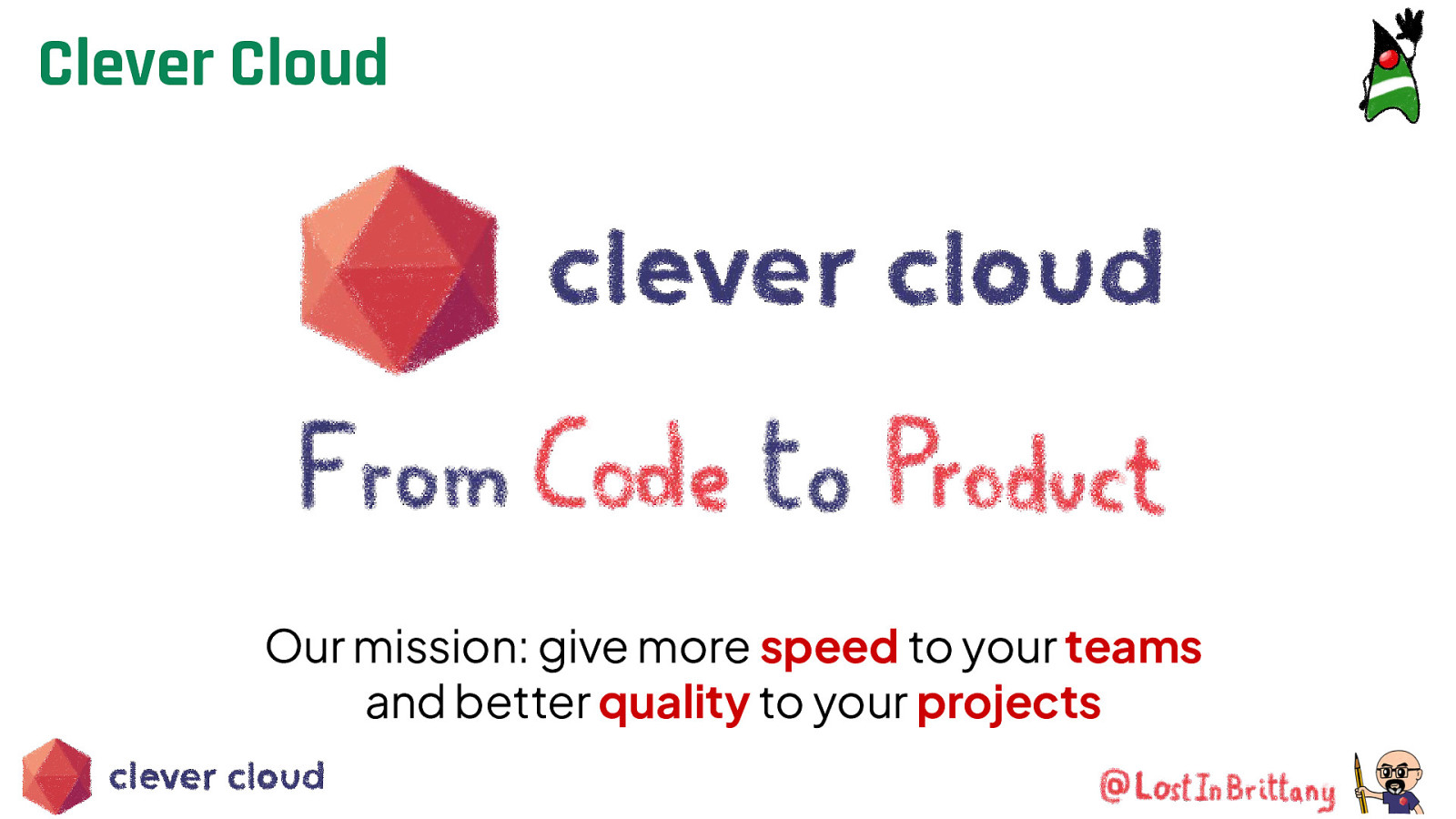
Clever Cloud Our mission: give more speed to your teams and better quality to your projects
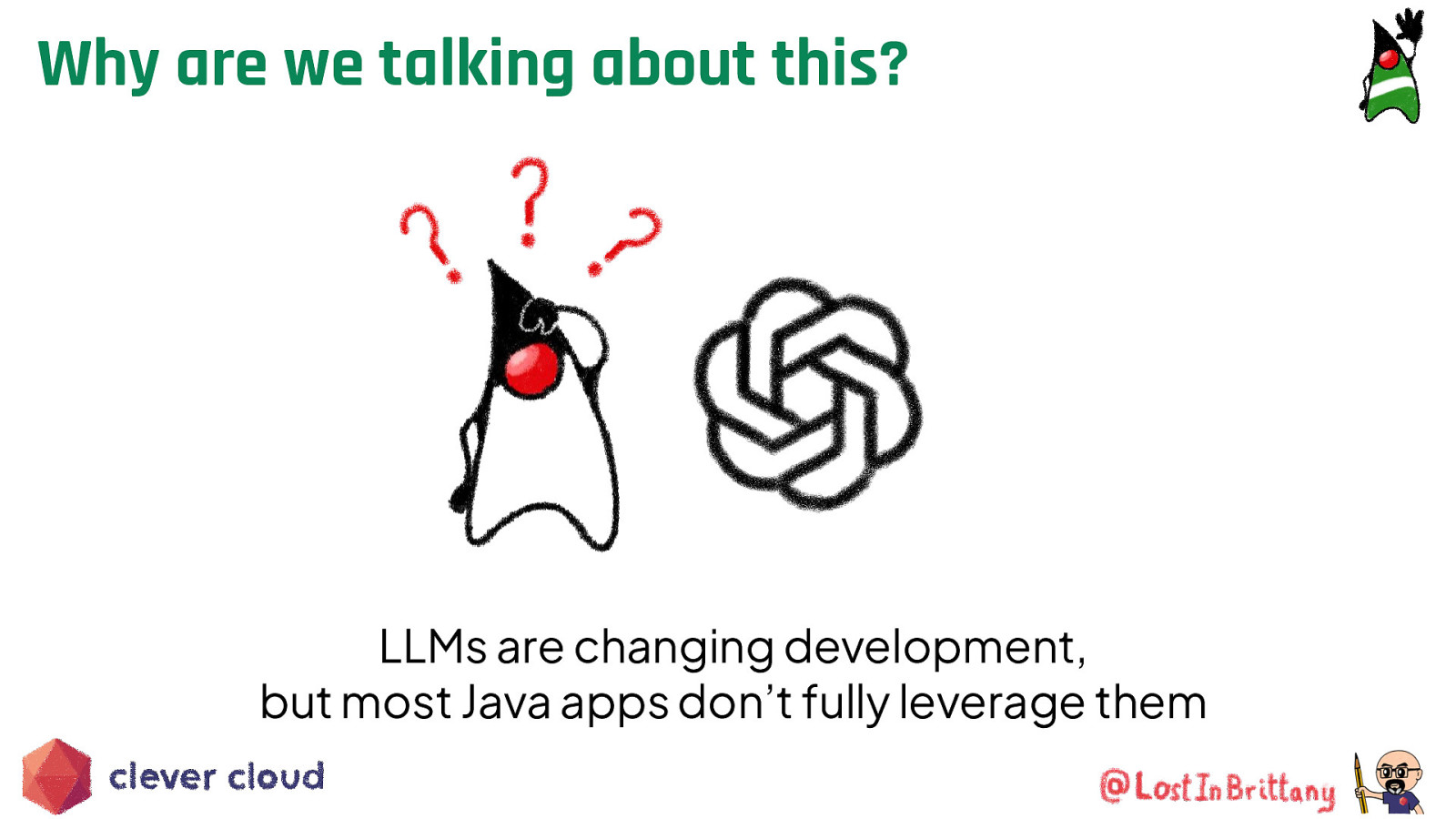
Why are we talking about this? LLMs are changing development, but most Java apps don’t fully leverage them
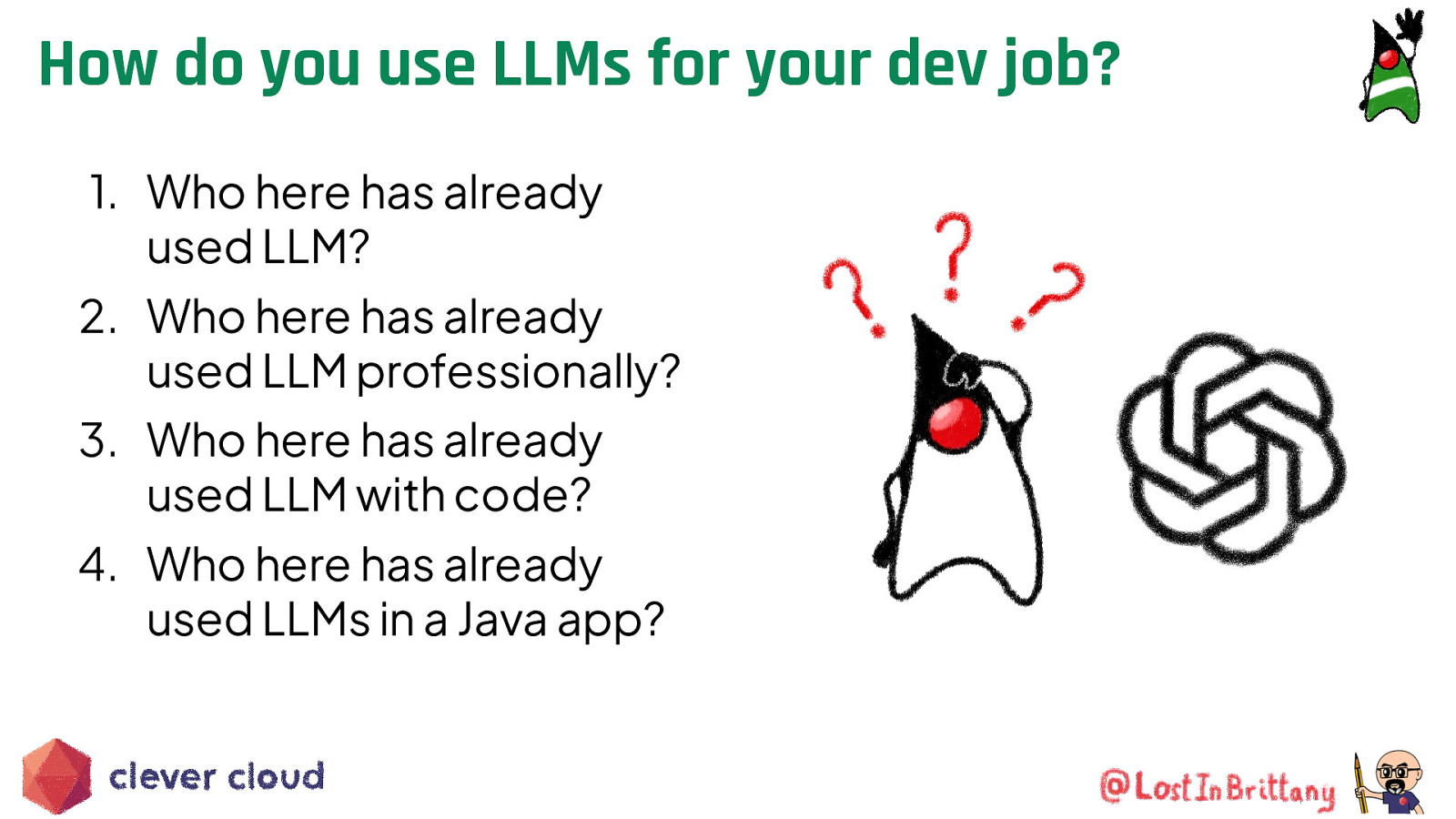
How do you use LLMs for your dev job? 1. Who here has already used LLM? 2. Who here has already used LLM professionally? 3. Who here has already used LLM with code? 4. Who here has already used LLMs in a Java app?

How LLMs are changing dev jobs https://addyo.substack.com/p/the-70-problem-hard-truths-about
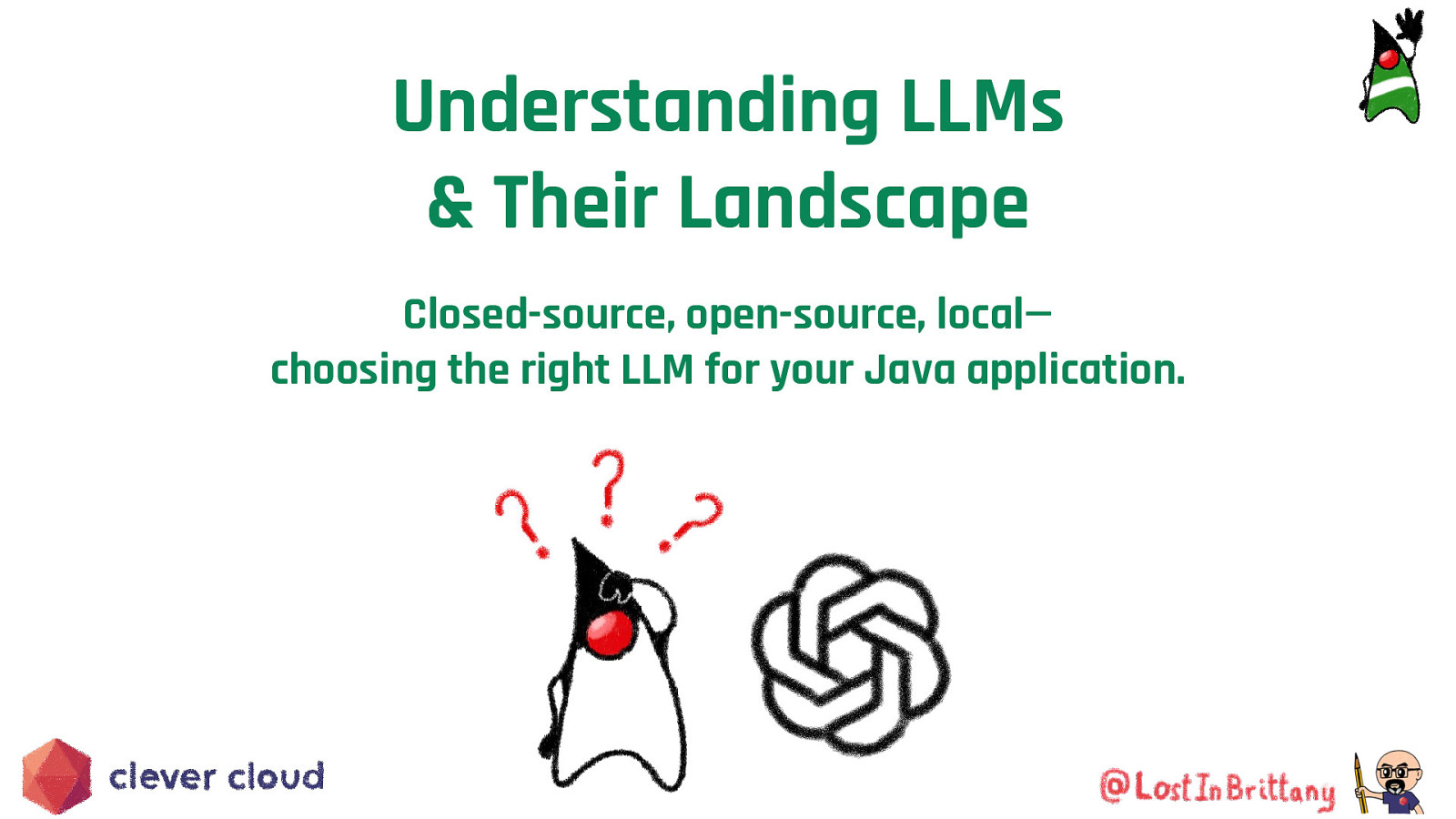
Understanding LLMs & Their Landscape Closed-source, open-source, local— choosing the right LLM for your Java application.
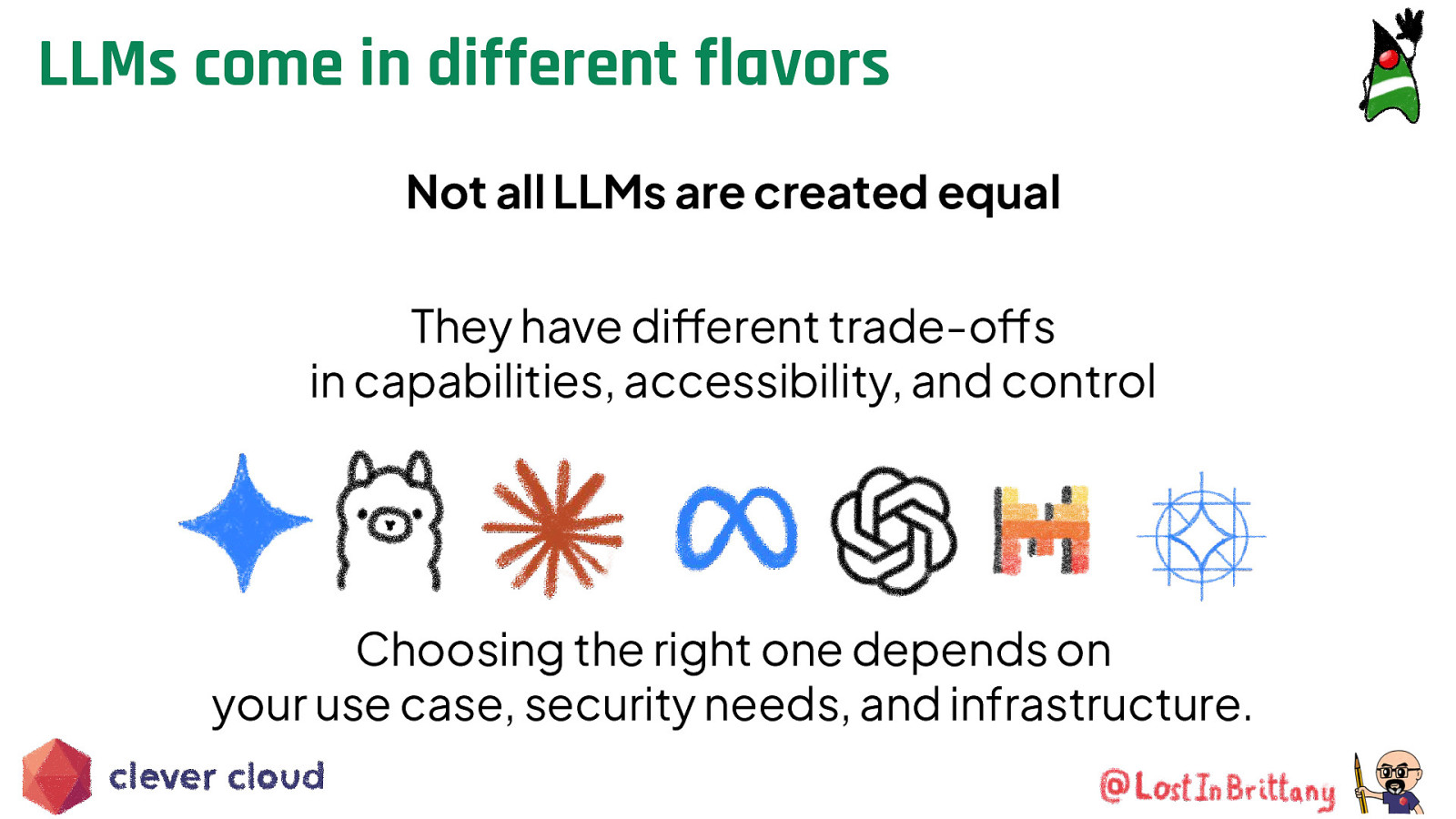
LLMs come in different flavors Not all LLMs are created equal They have different trade-offs in capabilities, accessibility, and control Choosing the right one depends on your use case, security needs, and infrastructure.
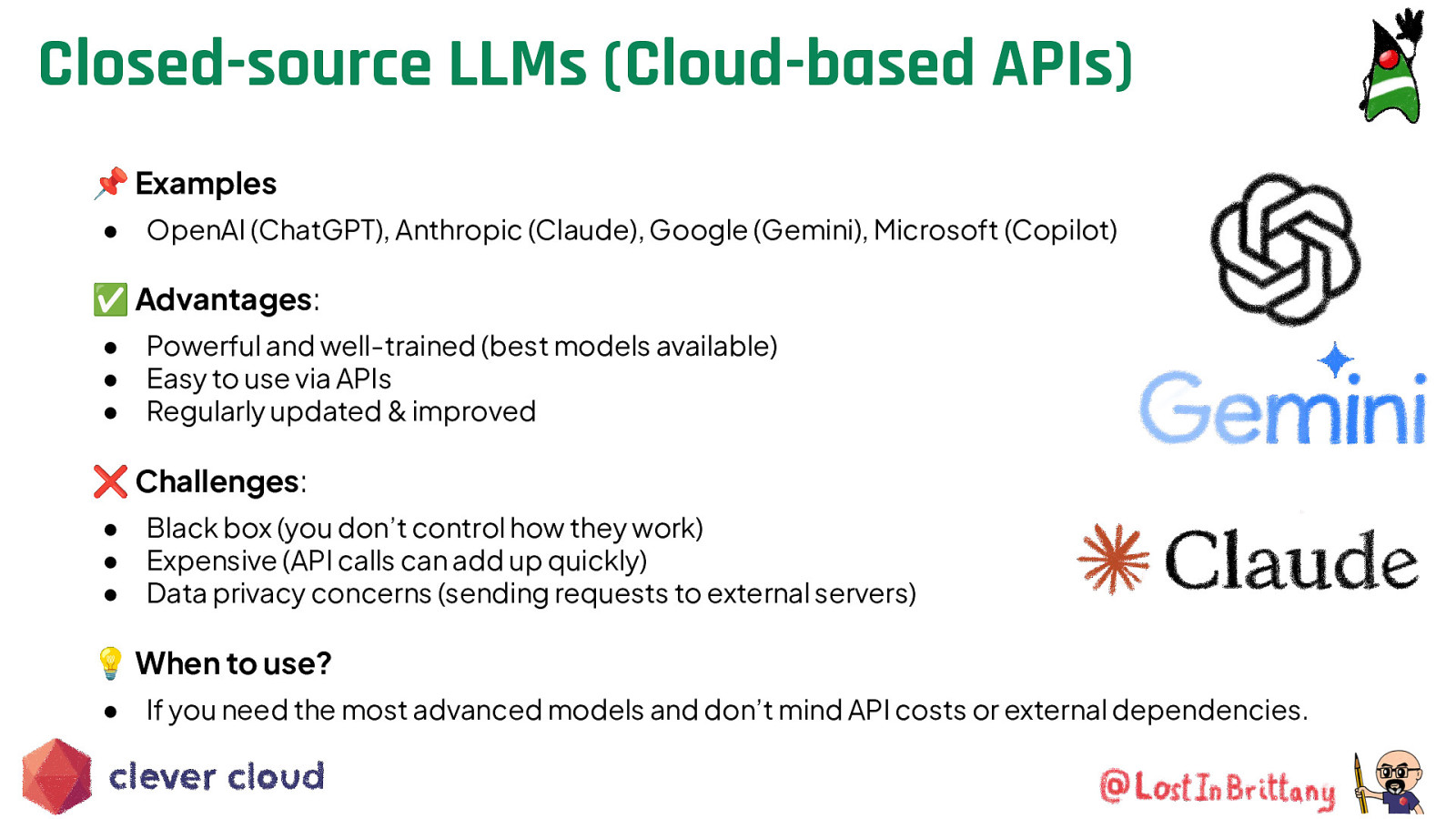
Closed-source LLMs (Cloud-based APIs) 📌 Examples ● OpenAI (ChatGPT), Anthropic (Claude), Google (Gemini), Microsoft (Copilot) ✅ Advantages: ● ● ● Powerful and well-trained (best models available) Easy to use via APIs Regularly updated & improved ❌ Challenges: ● ● ● Black box (you don’t control how they work) Expensive (API calls can add up quickly) Data privacy concerns (sending requests to external servers) 💡 When to use? ● If you need the most advanced models and don’t mind API costs or external dependencies.
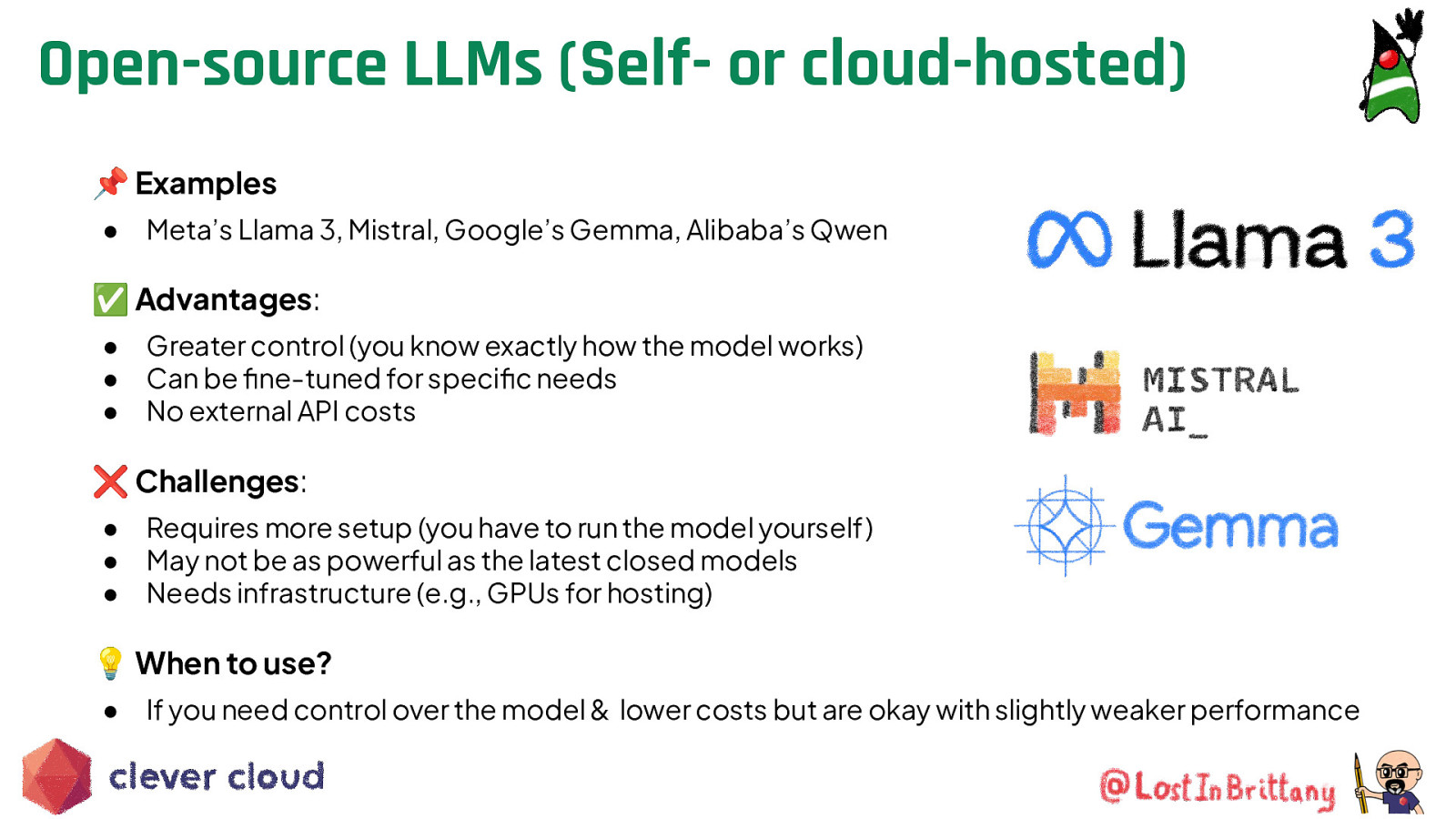
Open-source LLMs (Self- or cloud-hosted) 📌 Examples ● Meta’s Llama 3, Mistral, Google’s Gemma, Alibaba’s Qwen ✅ Advantages: ● ● ● Greater control (you know exactly how the model works) Can be fine-tuned for specific needs No external API costs ❌ Challenges: ● ● ● Requires more setup (you have to run the model yourself) May not be as powerful as the latest closed models Needs infrastructure (e.g., GPUs for hosting) 💡 When to use? ● If you need control over the model & lower costs but are okay with slightly weaker performance
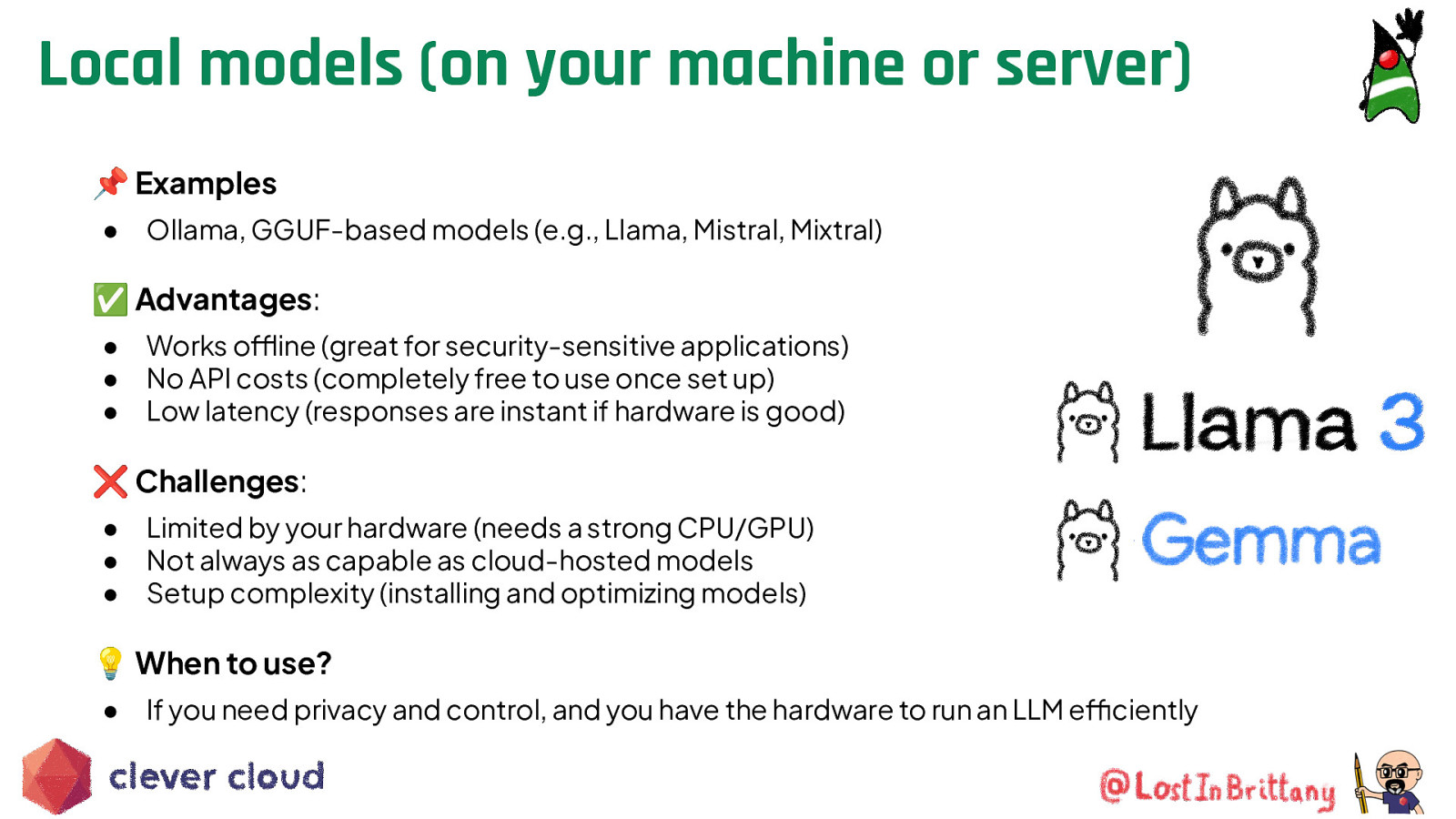
Local models (on your machine or server) 📌 Examples ● Ollama, GGUF-based models (e.g., Llama, Mistral, Mixtral) ✅ Advantages: ● ● ● Works offline (great for security-sensitive applications) No API costs (completely free to use once set up) Low latency (responses are instant if hardware is good) ❌ Challenges: ● ● ● Limited by your hardware (needs a strong CPU/GPU) Not always as capable as cloud-hosted models Setup complexity (installing and optimizing models) 💡 When to use? ● If you need privacy and control, and you have the hardware to run an LLM efficiently
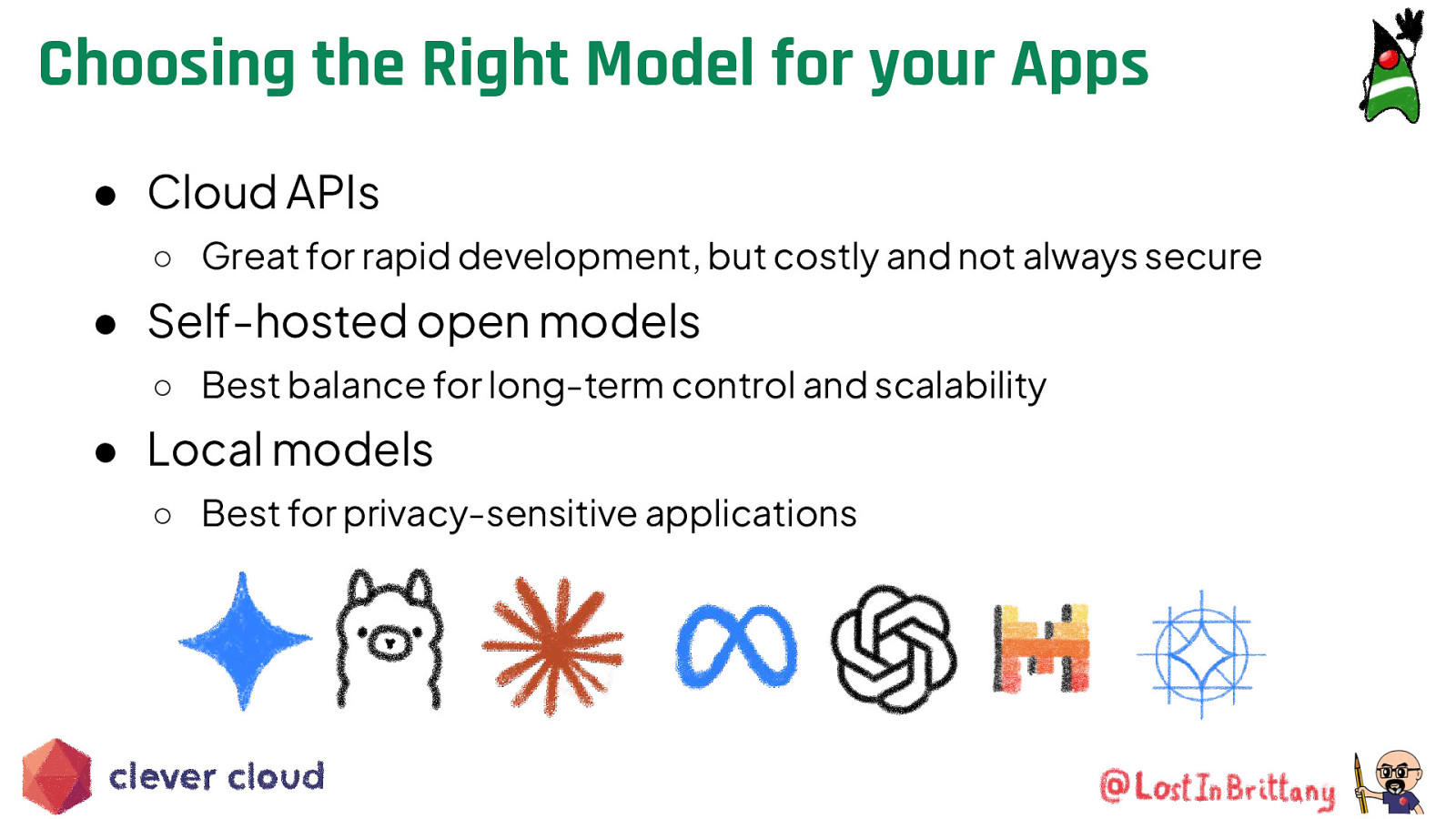
Choosing the Right Model for your Apps ● Cloud APIs ○ Great for rapid development, but costly and not always secure ● Self-hosted open models ○ Best balance for long-term control and scalability ● Local models ○ Best for privacy-sensitive applications
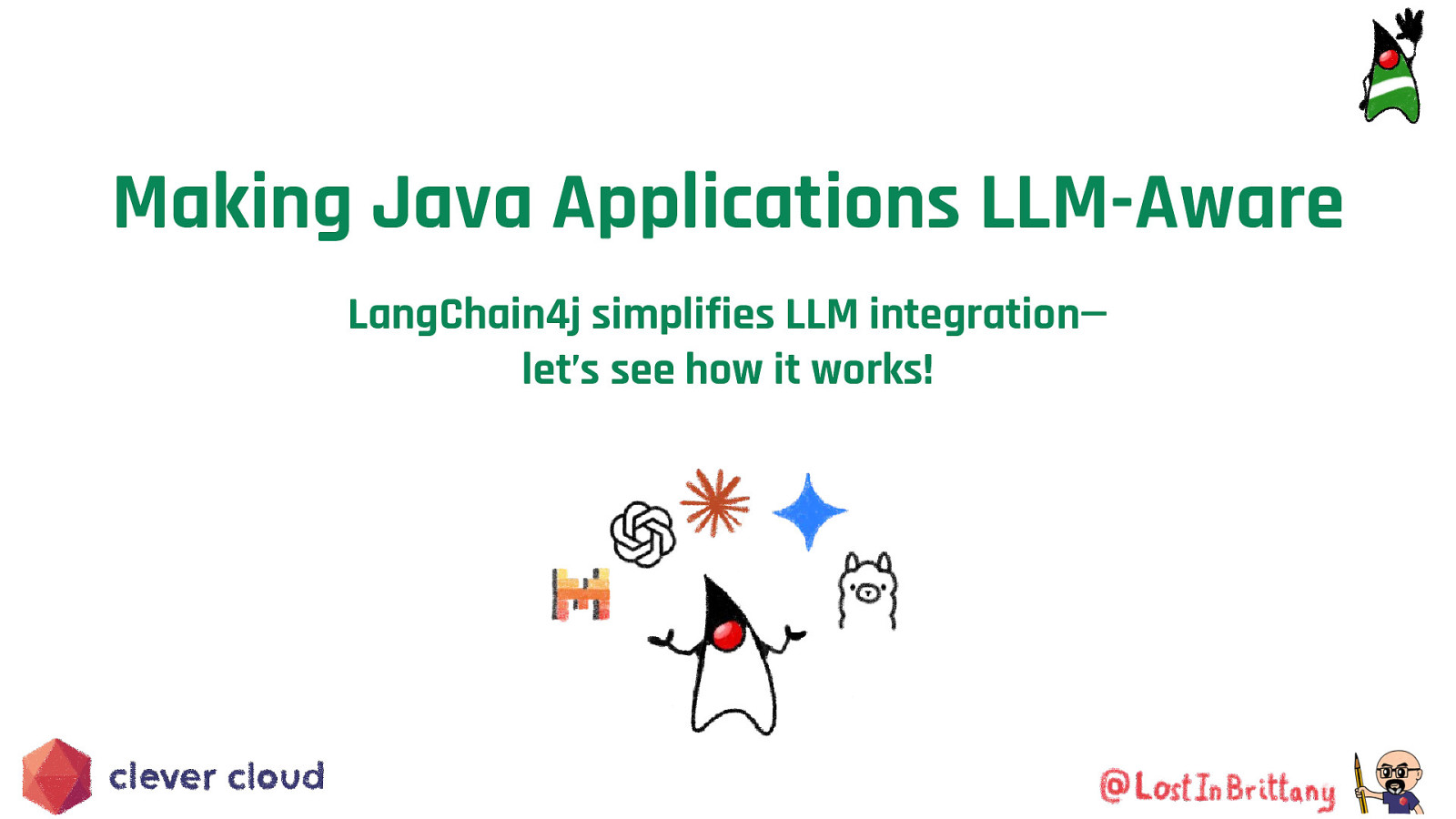
Making Java Applications LLM-Aware LangChain4j simplifies LLM integration— let’s see how it works!

Two ways to integrate LLMs with Java 1. Java applications using LLMs ○ Using LLMs as assistants, API consumers, or reasoning engines ○ Easier and works well for code generation, chatbots, and AI assistants 2. LLMs using Java applications ○ Exposing Java functions, APIs, and databases to LLMs for tool execution ○ More powerful but requires tool calling and execution control.
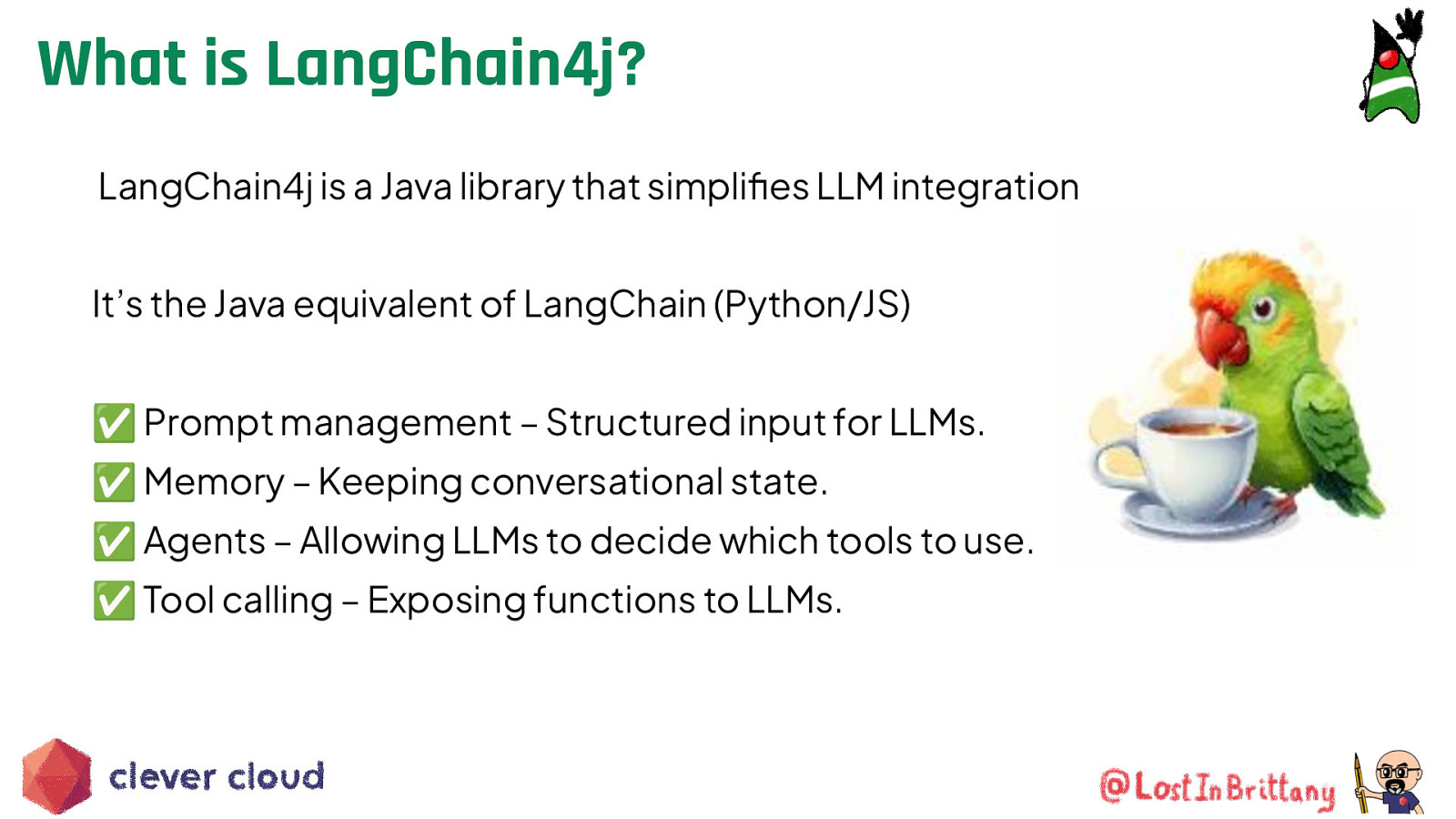
What is LangChain4j? LangChain4j is a Java library that simplifies LLM integration It’s the Java equivalent of LangChain (Python/JS) ✅ Prompt management – Structured input for LLMs. ✅ Memory – Keeping conversational state. ✅ Agents – Allowing LLMs to decide which tools to use. ✅ Tool calling – Exposing functions to LLMs.
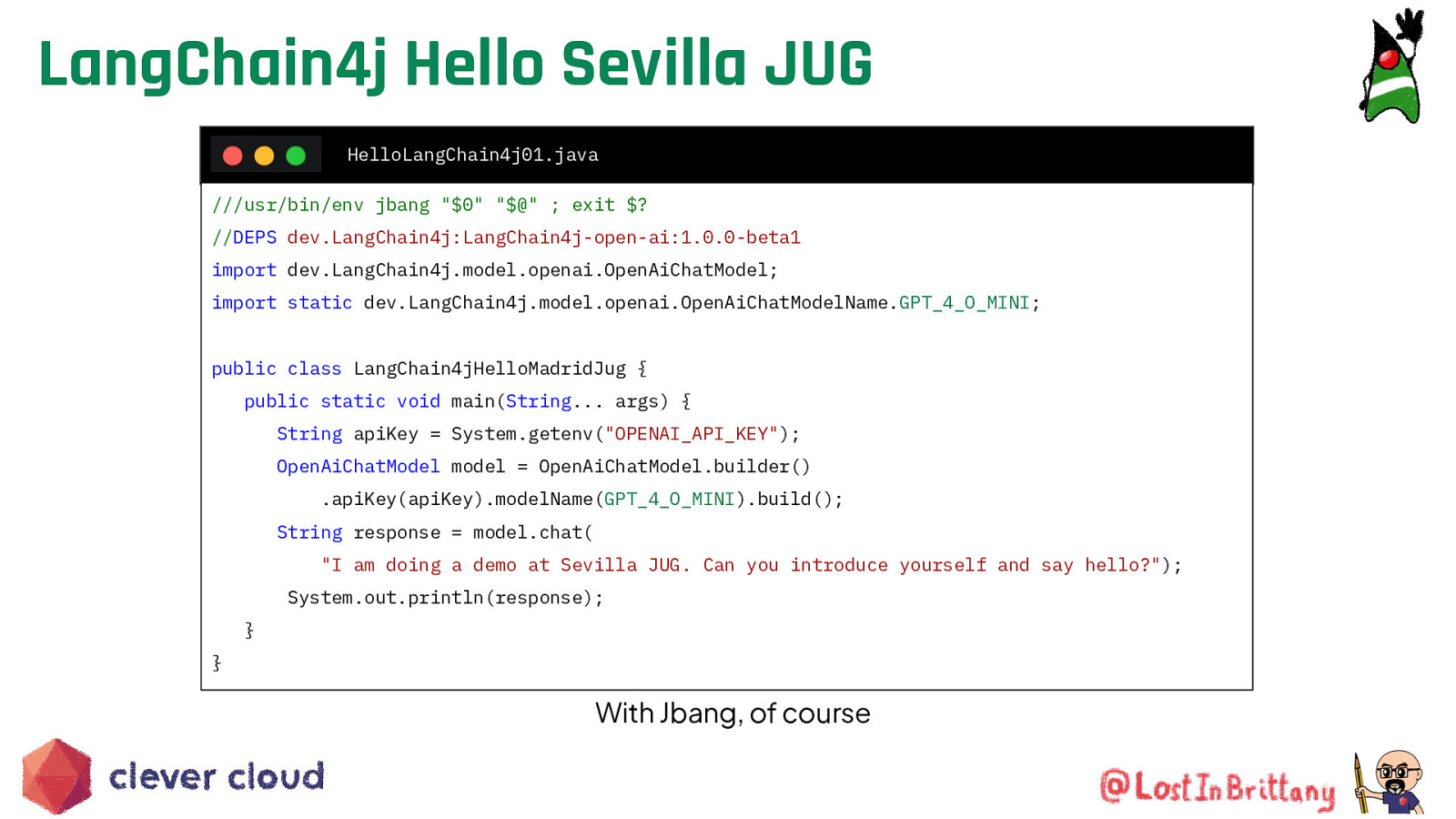
LangChain4j Hello Sevilla JUG HelloLangChain4j01.java ///usr/bin/env jbang “$0” “$@” ; exit $? //DEPS dev.LangChain4j:LangChain4j-open-ai:1.0.0-beta1 import dev.LangChain4j.model.openai.OpenAiChatModel; import static dev.LangChain4j.model.openai.OpenAiChatModelName.GPT_4_O_MINI; public class LangChain4jHelloMadridJug { public static void main(String… args) { String apiKey = System.getenv(“OPENAI_API_KEY”); OpenAiChatModel model = OpenAiChatModel.builder() .apiKey(apiKey).modelName(GPT_4_O_MINI).build(); String response = model.chat( “I am doing a demo at Sevilla JUG. Can you introduce yourself and say hello?”); System.out.println(response); } } With Jbang, of course

We want to see it working! https://github.com/LostInBrittany/langchain4j-for-tools-and-mcp-demo/
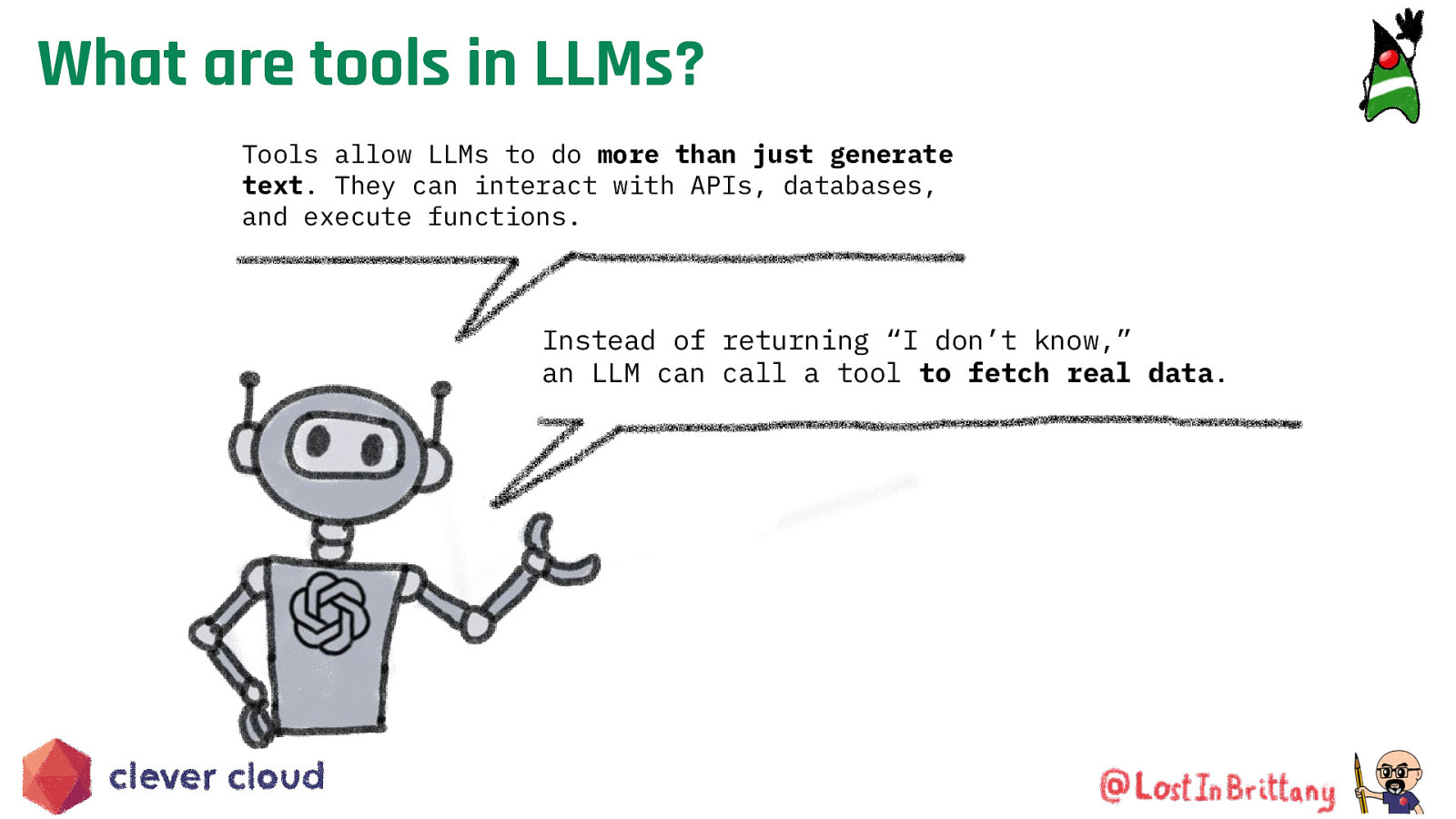
What are tools in LLMs? Tools allow LLMs to do more than just generate text. They can interact with APIs, databases, and execute functions. Instead of returning “I don’t know,” an LLM can call a tool to fetch real data.
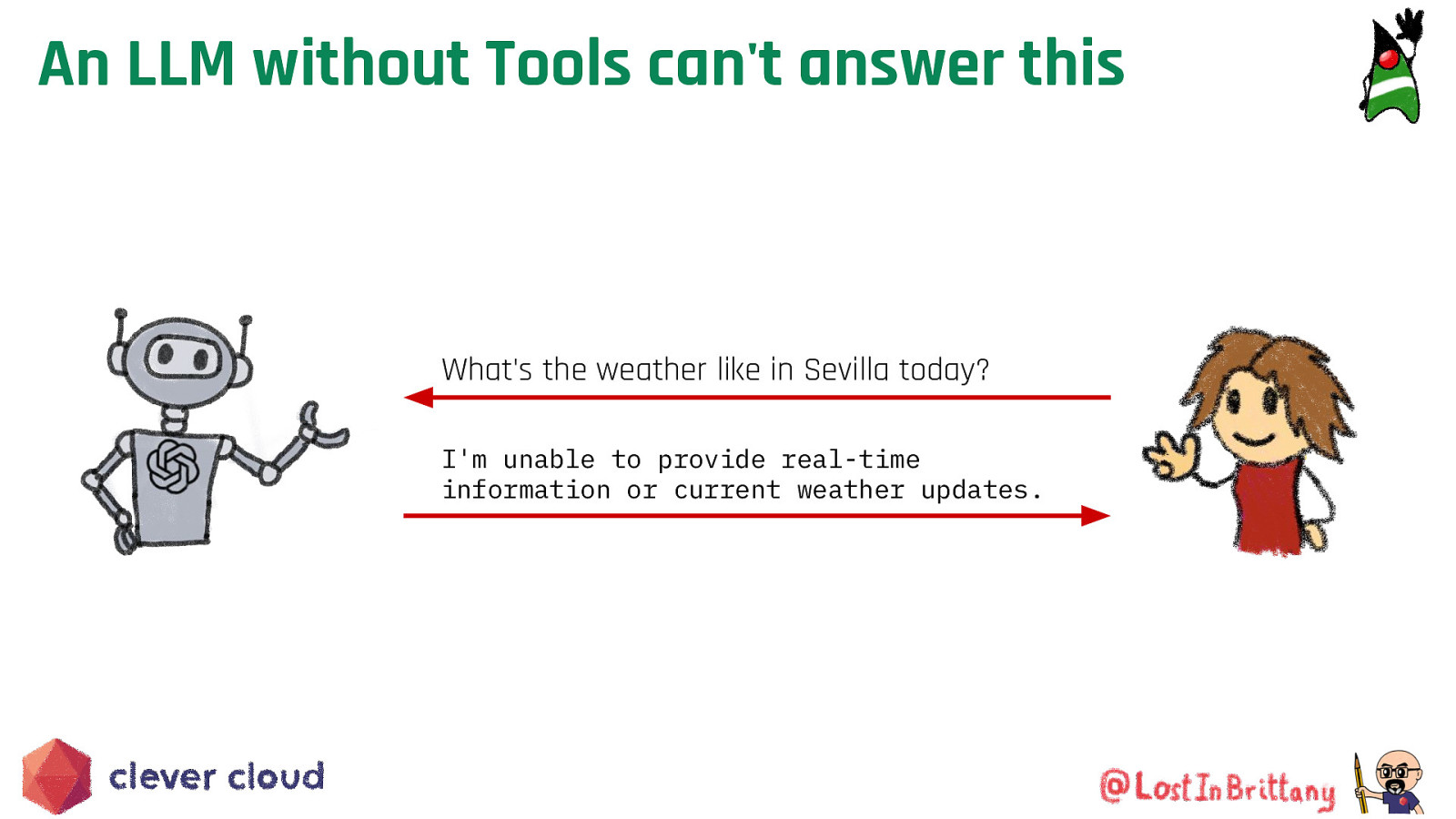
An LLM without Tools can’t answer this What’s the weather like in Sevilla today? I’m unable to provide real-time information or current weather updates.
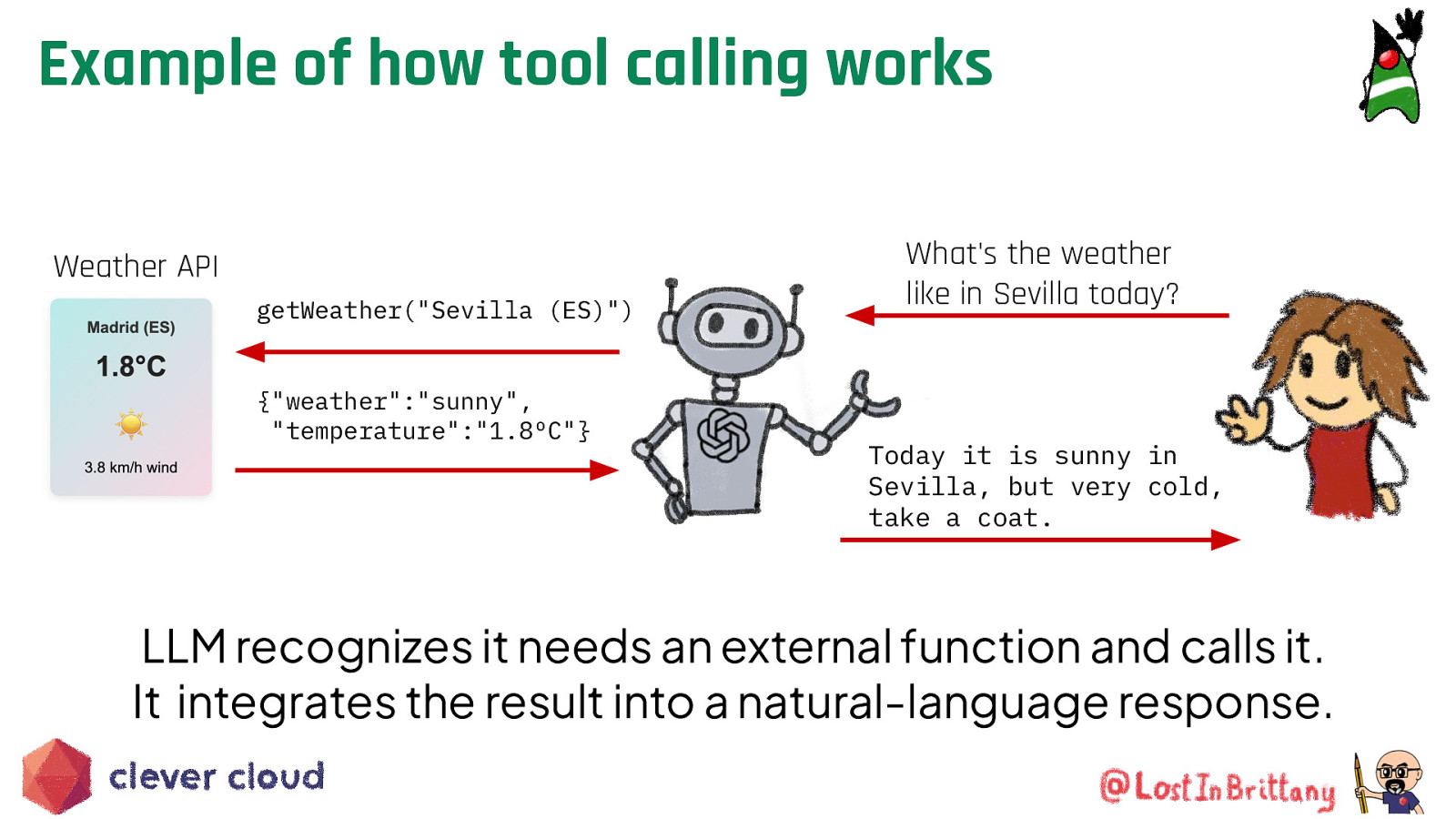
Example of how tool calling works Weather API getWeather(“Sevilla (ES)”) {“weather”:”sunny”, “temperature”:”1.8ºC”} What’s the weather like in Sevilla today? Today it is sunny in Sevilla, but very cold, take a coat. LLM recognizes it needs an external function and calls it. It integrates the result into a natural-language response.
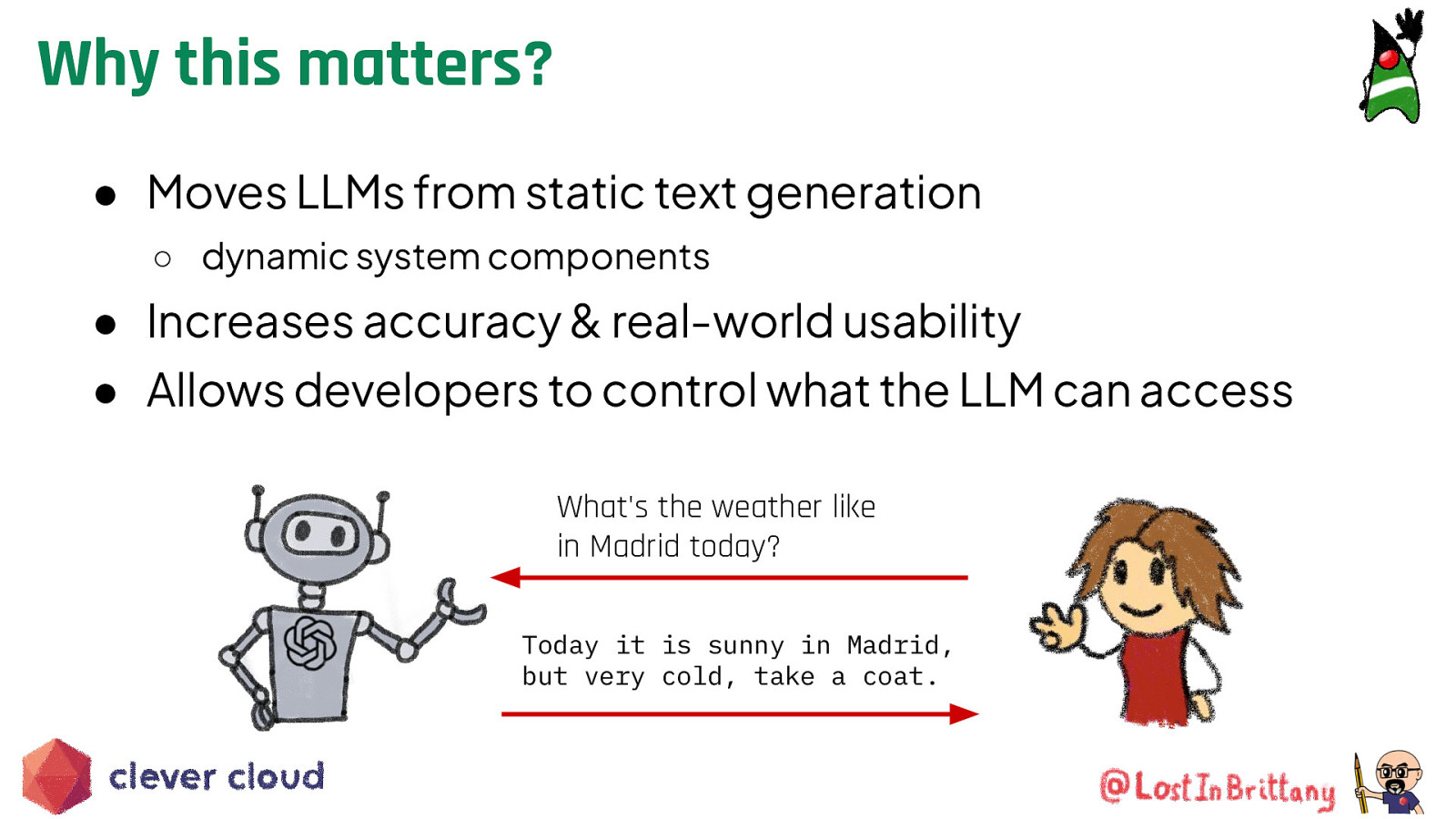
Why this matters? ● Moves LLMs from static text generation ○ dynamic system components ● Increases accuracy & real-world usability ● Allows developers to control what the LLM can access What’s the weather like in Madrid today? Today it is sunny in Madrid, but very cold, take a coat.
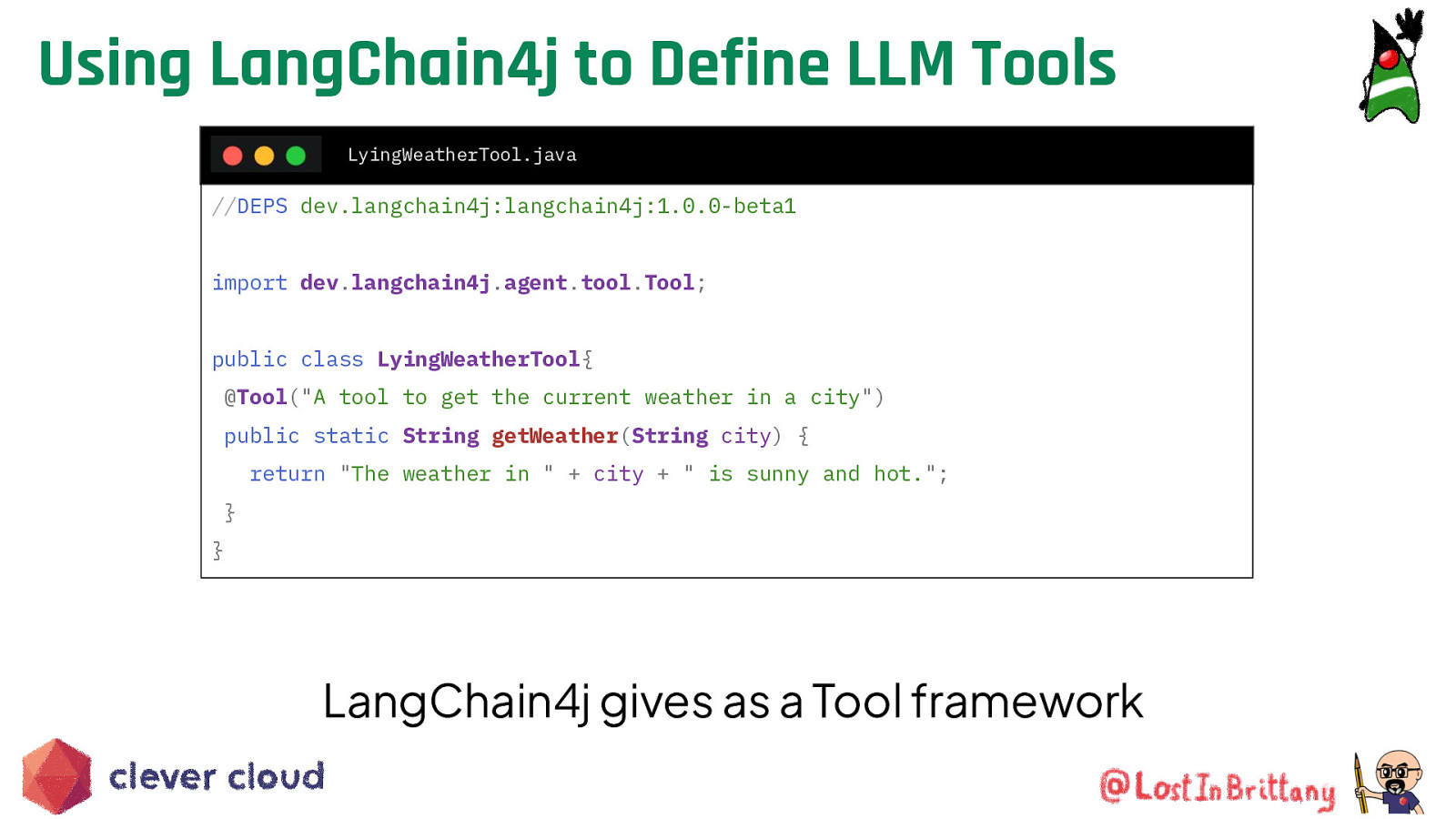
Using LangChain4j to Define LLM Tools LyingWeatherTool.java //DEPS dev.langchain4j:langchain4j:1.0.0-beta1 import dev.langchain4j.agent.tool.Tool; public class LyingWeatherTool{ @Tool(“A tool to get the current weather in a city”) public static String getWeather(String city) { return “The weather in ” + city + ” is sunny and hot.”; } } LangChain4j gives as a Tool framework
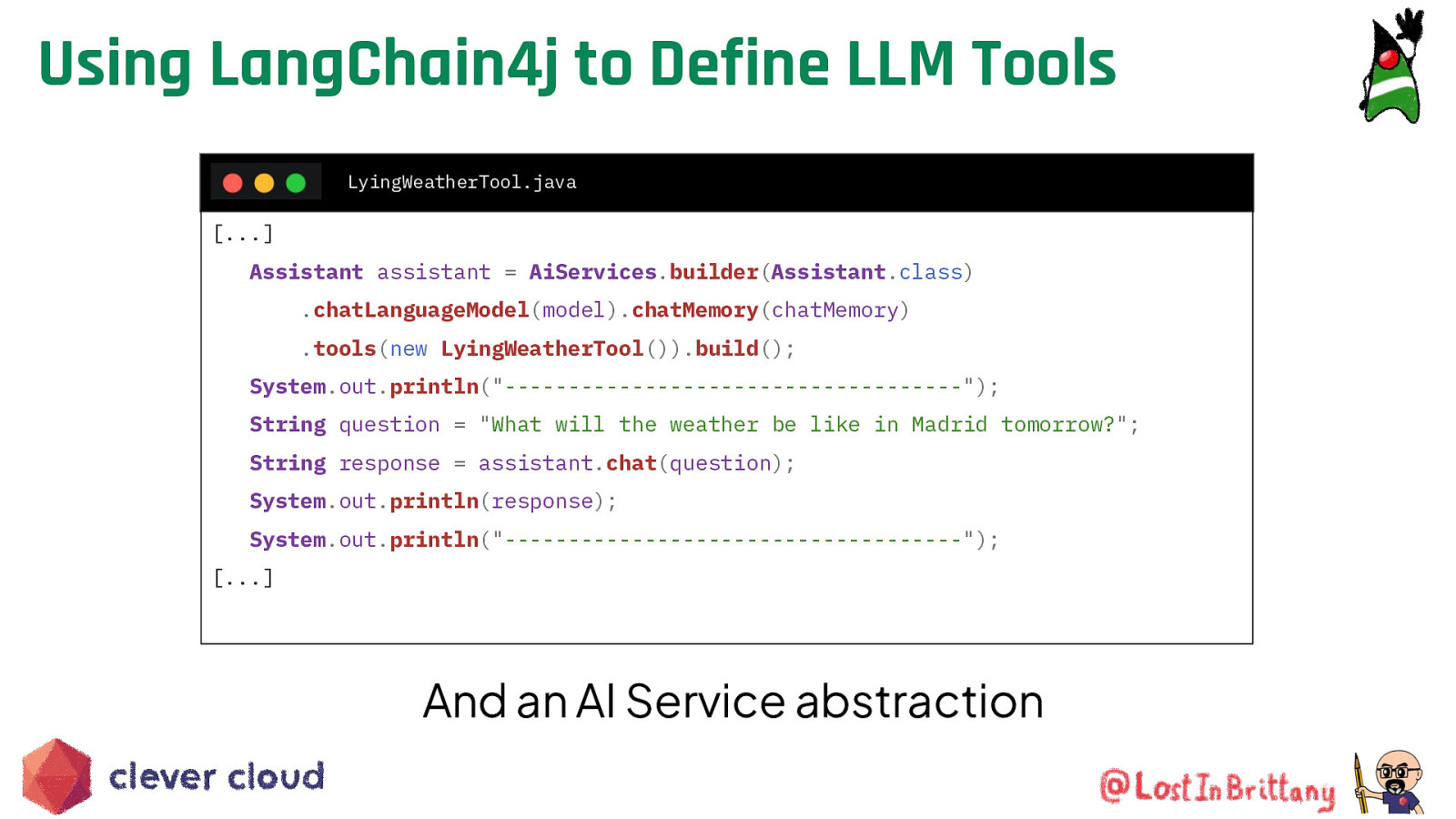
Using LangChain4j to Define LLM Tools LyingWeatherTool.java […] Assistant assistant = AiServices.builder(Assistant.class) .chatLanguageModel(model).chatMemory(chatMemory) .tools(new LyingWeatherTool()).build(); System.out.println(“——————————————————”); String question = “What will the weather be like in Madrid tomorrow?”; String response = assistant.chat(question); System.out.println(response); System.out.println(“——————————————————”); […] And an AI Service abstraction
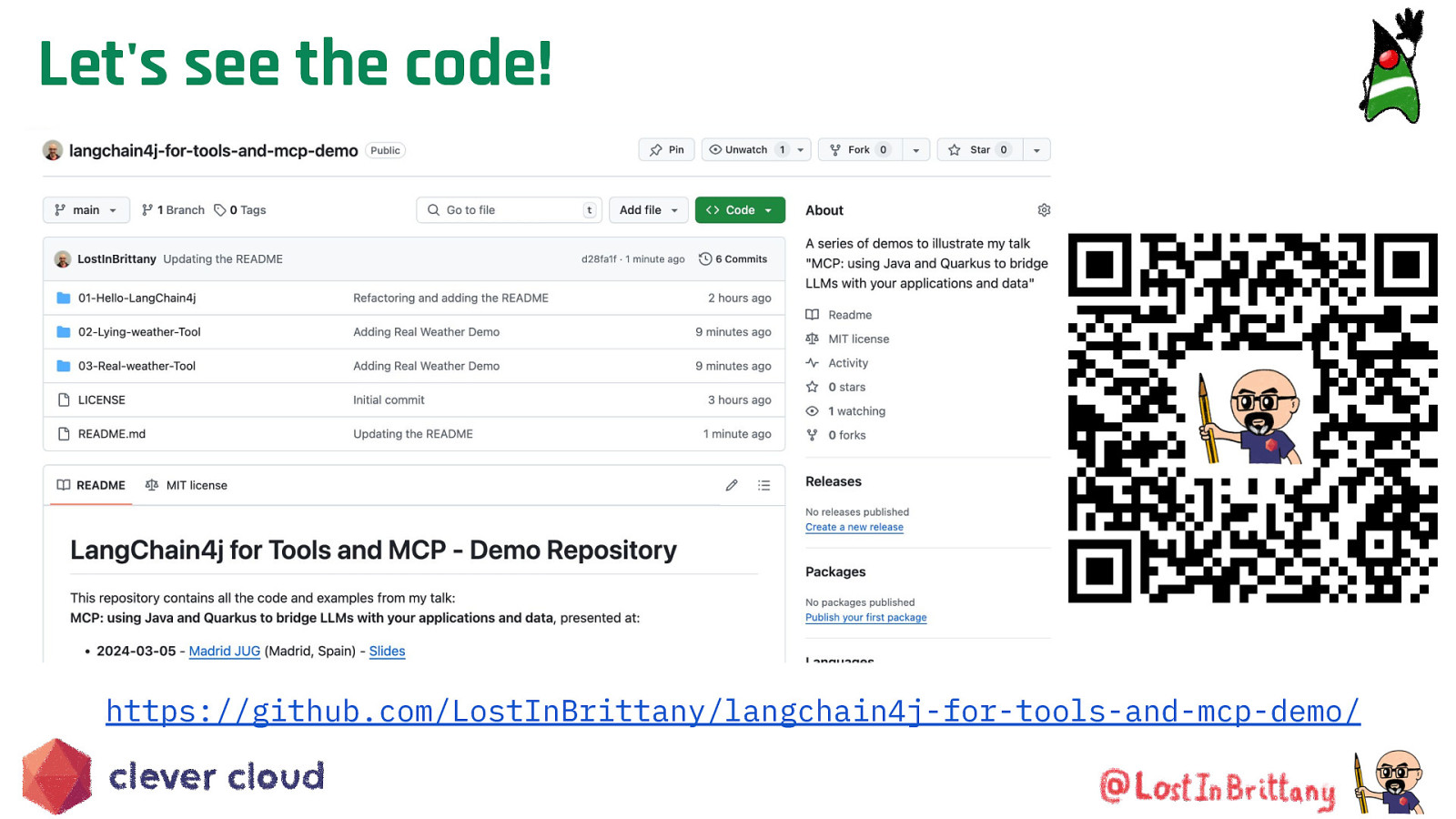
Let’s see the code! https://github.com/LostInBrittany/langchain4j-for-tools-and-mcp-demo/
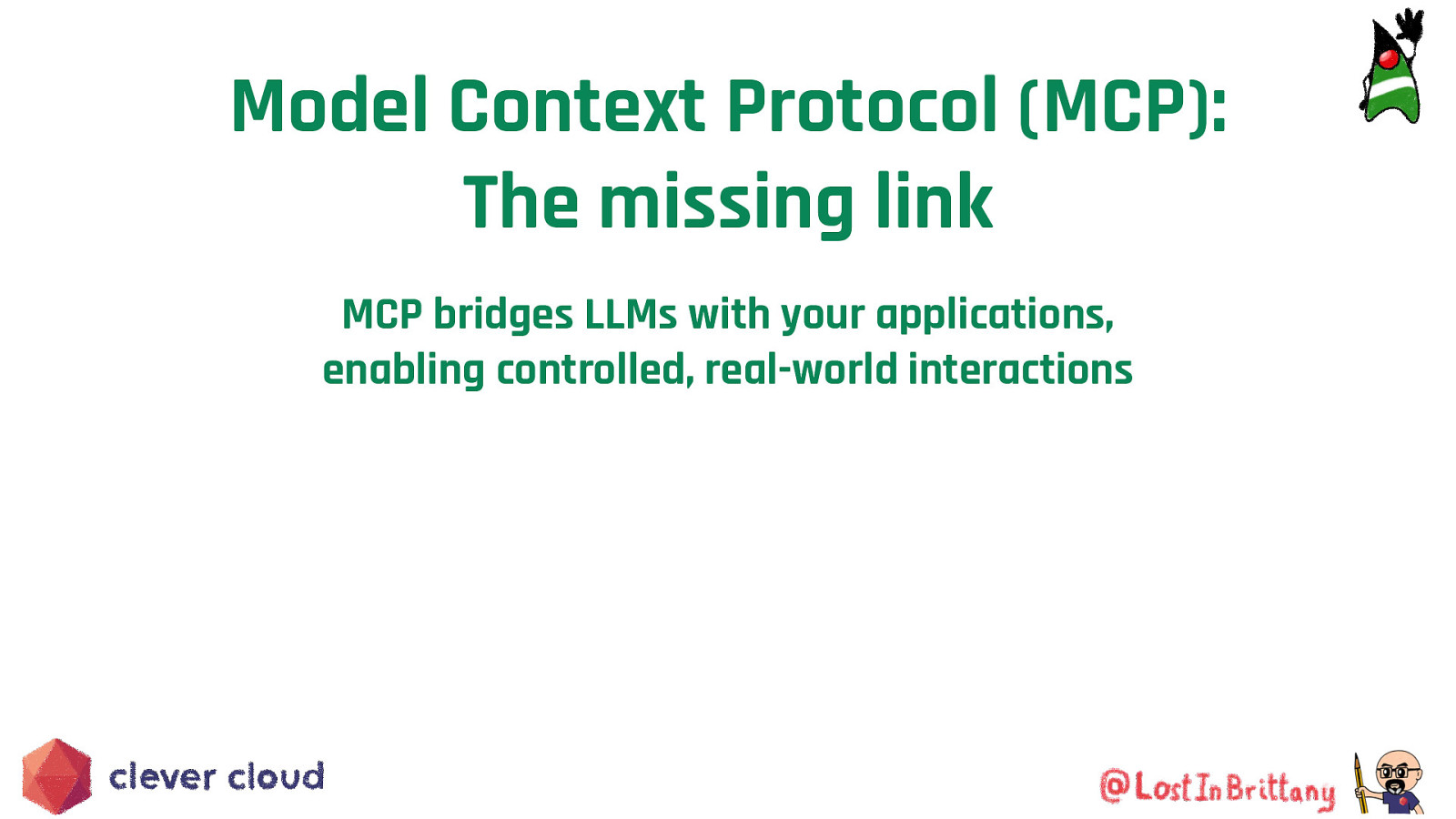
Model Context Protocol (MCP): The missing link MCP bridges LLMs with your applications, enabling controlled, real-world interactions
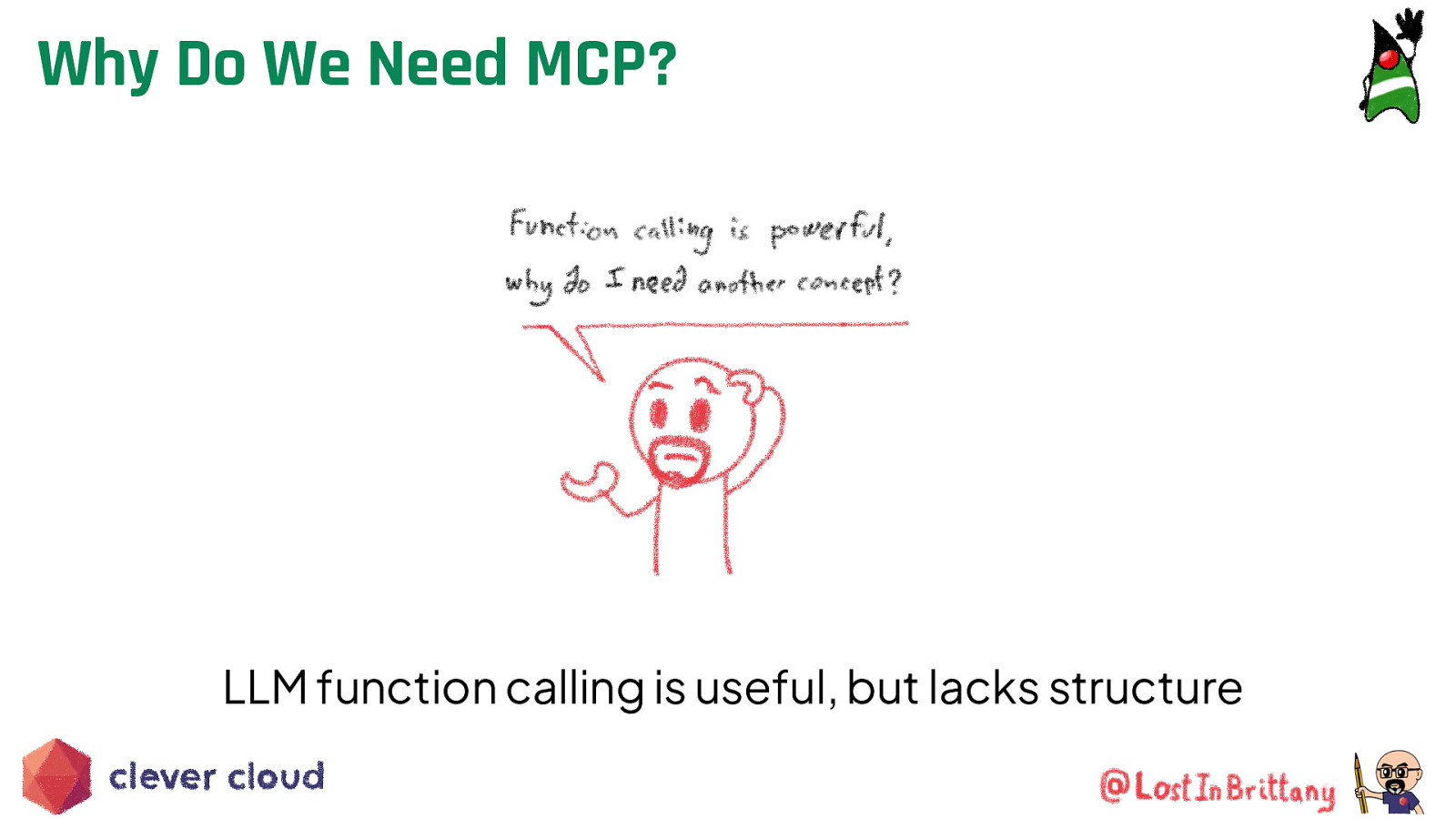
Why Do We Need MCP? LLM function calling is useful, but lacks structure

Why Do We Need MCP? Problem ● LLMs don’t automatically know what functions exist. ● No standard way to expose an application’s capabilities. ● Hard to control security and execution flow. Solution: MCP ● MCP defines a standard way to describe and expose functionalities. ● Applications stay in control over what LLMs can do.
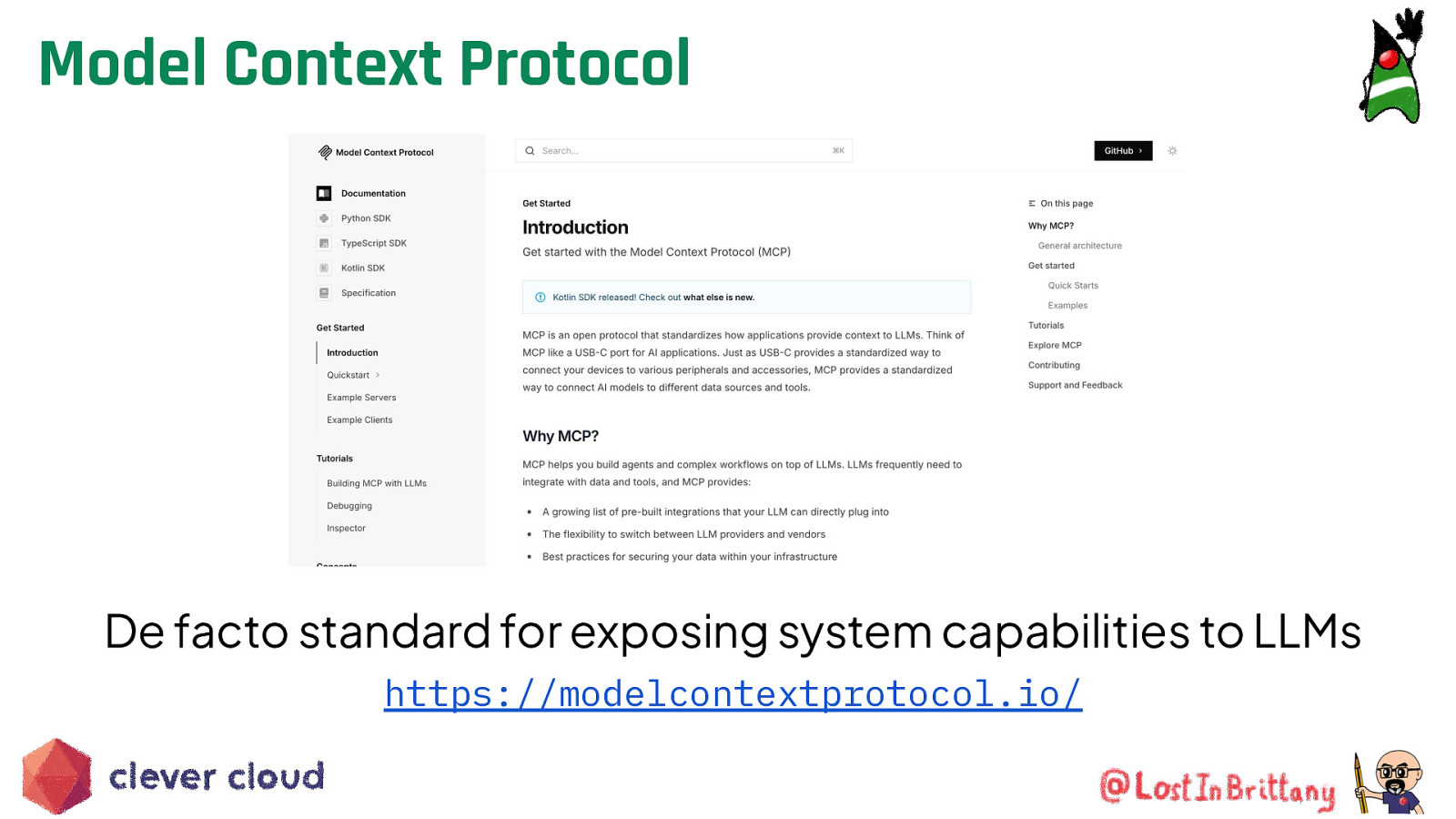
Model Context Protocol De facto standard for exposing system capabilities to LLMs https://modelcontextprotocol.io/
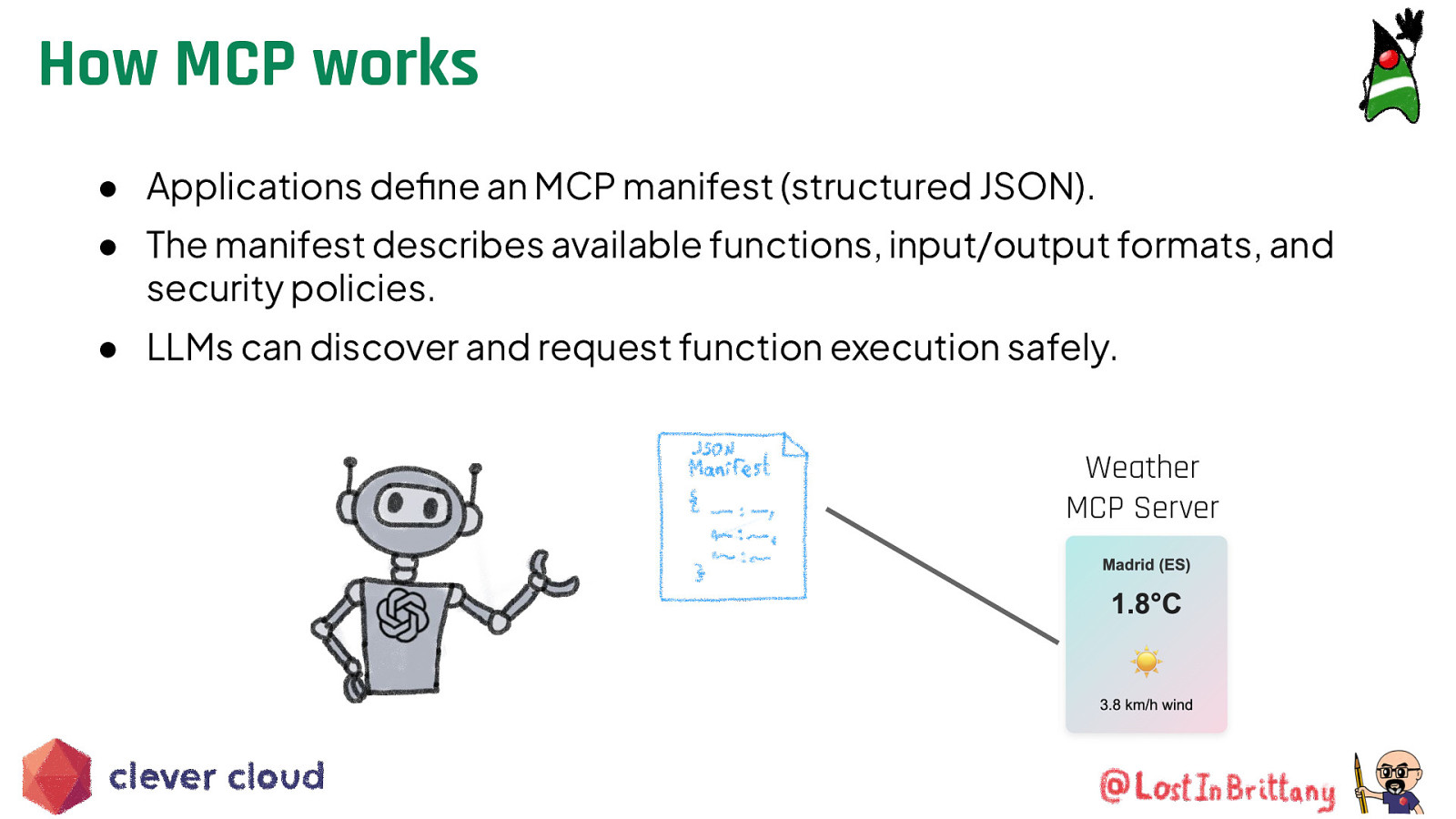
How MCP works ● Applications define an MCP manifest (structured JSON). ● The manifest describes available functions, input/output formats, and security policies. ● LLMs can discover and request function execution safely. Weather MCP Server

MCP is provider-agnostic Works with any LLM provider Ensures standardized function exposure across platforms

Understanding the MCP Manifest mcp-manifest.json { “functions”: [ { “name”: “getWeather”, “description”: “Fetches the current weather for a city.”, “parameters”: { “city”: { “type”: “string”, “required”: true }, “countryCode”: { “type”: “string”, “required”: true } } } ]} ● Lists available tools ● Describes expected inputs/outputs ● Defines execution policies
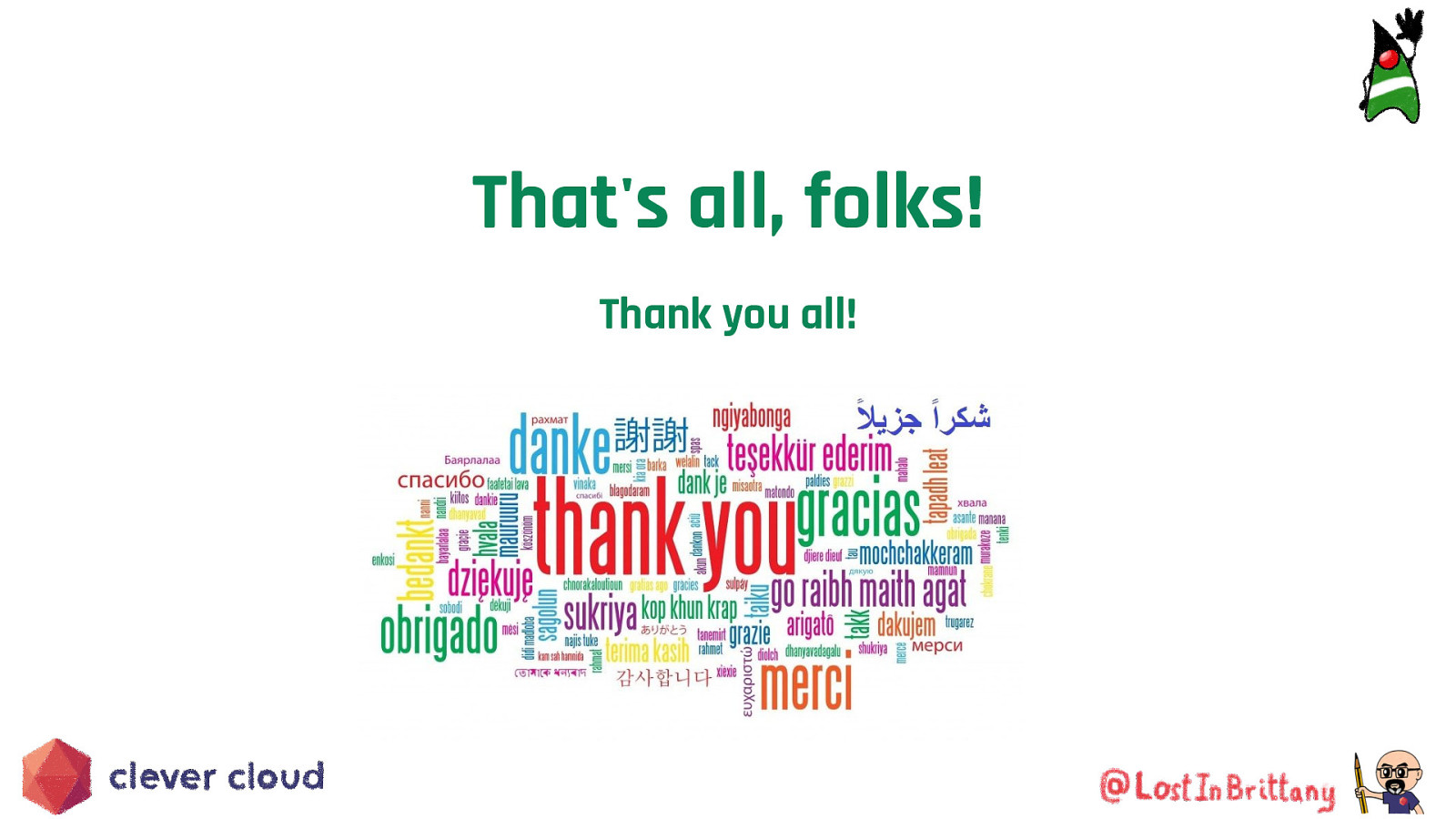
That’s all, folks! Thank you all!